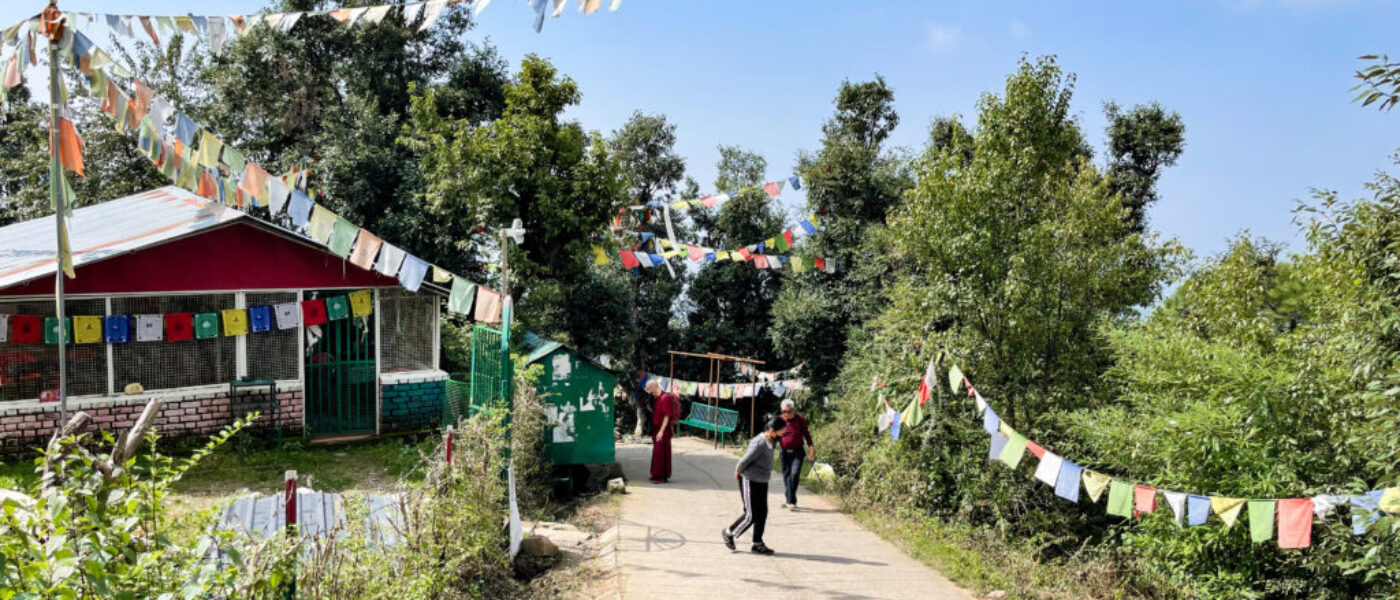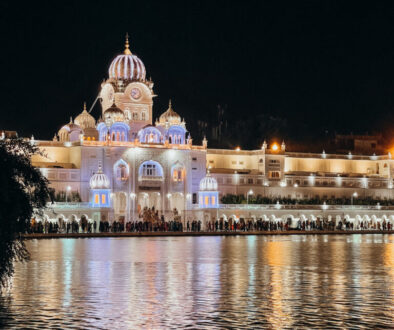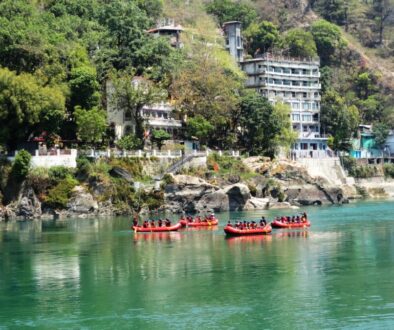Dharamsala is a beautiful hill station in India that is known for its stunning views and its vibrant culture. The town is situated in the foothills of the Himalayas, and it offers visitors a chance to experience a different way of life. Dharamsala is home to a large Tibetan population, and the town has been nicknamed “Little Lhasa” because of its strong Tibetan influence. Visitors to Dharamsala can explore the many Buddhist temples and monasteries, or they can trek through the mountains and enjoy the incredible scenery. There are also numerous restaurants and cafes that offer delicious food from all over India. Whether you’re looking for a peaceful retreat or an educational adventure, Dharamsala is the perfect destination.

The Dalai Lama is the spiritual leader of the Tibetan people, and has been in exile since 1959. The Tibetan people have a long history of peaceful resistance to Chinese oppression, and the Dalai Lama has been a vocal advocate for their rights. In 1959, after a failed uprising against the Chinese government, the Dalai Lama was forced to flee Tibet. He eventually settled in Dharamshala, India, where he established a government-in-exile and continues to speak out against human rights abuses in Tibet. The Dalai Lama’s exile is a symbol of the Tibetans’ struggle for freedom, and he remains an important figure in the fight for Tibetan autonomy, and a visit to Dharamshala is a great way to experience Tibetan culture and learn about their struggle, but first, here’s the backstory…

On March 10, 1959, the Dalai Lama fled Tibet and found refuge in Dharamsala, India…
The Dalai Lama is the spiritual leader of Tibetan Buddhism and the temporal ruler of Tibet. He was born in 1935 to a peasant family and by the age of two, he was identified as the reincarnation of the 13th Dalai Lama. At the age of five, he began his monastic education and was formally enthroned in 1940. However, his time as leader was not easy.

In 1949, communist forces seized control of mainland China after defeating the Nationalist government in a civil war. In 1950, China invaded Tibet and proclaimed it a province of China. This resulted in a violent uprising by the Tibetan people against Chinese rule. The uprising was crushed by Chinese forces, and thousands of people were killed or imprisoned. In 1951, another treaty was signed between China and Tibet which granted autonomy to Tibet within the People’s Republic of China (PRC). However, many Tibetans feel that this autonomy is not genuine and that they are still being oppressed by Chinese rule.
The Dalai Lama Resistance Movement emerged and for nine years, they fought against the Chinese army. Ultimately, they were defeated and in 1959, the Dalai Lama went into exile.

First, he went to India where he set up the Tibetan government-in-exile in Dharamsala. Dharamsala is now home to a large Tibetan refugee community and has been nicknamed “Little Lhasa” because it is seen as a Tibetan cultural center. The Dalai Lama has lived in Dharamsala ever since and continues to work for Tibetan autonomy from China. In 1989, he was awarded the Nobel Peace Prize for his nonviolent resistance to China’s occupation of Tibet.
The Dalai Lama’s exile to Dharamshala was not just a matter of finding refuge; it was also a way to build a base from which he could continue his fight for Tibetan autonomy. And while he has never been able to return to his home country, he has remained committed to his people and their cause. From his base in Dharamshala, he has worked ceaselessly for peace and human rights both inside and outside Tibet, and works to preserve Tibetan culture, making Dharamshala a great place to experience Tibetan culture.
DIY McLeod Ganj Walking Tour
This DIY walking tour will take you through McLeod Ganj, a popular suburb of Dharamsala that shares a resemblance to the Tibetan capital of Lhasa, to visit some of the most significant sites for the local Tibetan population. Depending on how long you want to spend at each site, it can take from about 1.5hours to 3+ hours, with up to 40 minutes of that time spent walking. The walk itself is on a slight elevation, but avoids main roads with too much traffic.
The McLeod Square Temple, also known as the Dalai Lama Temple, is the largest and most important Tibetan Buddhist temple in India. It houses a number of precious artifacts, including a statue of the Dalai Lama himself.
McLeod Square Temple houses the Namgyal monastery, one of the biggest and magnificent Tibetan monasteries, set up in the 16th century, and is the seat of the Dalai Lama. Following the signs to the temple, you’ll pass by Namgyal Book Shop; make sure to look inside if you’re a book worm keen to learn more.


Looping around the Dalai Lama Temple you’ll find a highlight of this temple: the Buddhist prayer wheels. Buddhist prayer wheels are a centuries-old tradition that has been adapted for use in modern times. The basic idea is that by spinning the wheel, you are sending prayers out into the world. Each revolution of the wheel is equivalent to reciting a certain number of mantras, and it is believed that the more times you spin the wheel, the more merit you will earn. There are different types of prayer wheels, but they all have one thing in common: they are meant to be used as a tool for bringing about positive change in the world. While some people may use prayer wheels for personal meditation or reflection, others see them as a way to promote peace and compassion in the world. In either case, prayer wheels can be an effective way to connect with your spiritual side and make a positive difference in the world.

Be sure to spin the prayer wheels of the Kalachakra Temple clockwise! The Temple is open to visitors and there are often public talks and demonstrations held here, as it is one of the most important centers for the study and practice of Tibetan Buddhism anywhere in the world. As you continue walking you will pass by the Buddhist stupa – built to honour the Tibetan soldiers, who died during the freedom struggle of Tibet and the Flag Temple where colour of the flag symbolises an element.
Finally, the Tsuglagkhang temple is another popular tourist attraction in McLeod Ganj. It houses the Tibetan Museum, which contains a wealth of information on Tibetan history and culture. The temple complex also has a garden and a cafe, making it a great place to relax and soak up the atmosphere of this special place. Note that the museum is currently closed Saturdays and Mondays, so you may wish to plan your visit accordingly.

Exploring Dharamshala
There are several monasteries in and around Dharamsala generally located on hilltops where monks can be seen going about their daily rituals such as offerings to deities, chanting sutras, prostrating themselves during prayers or attending to other religious duties. Mornings usually start with students practising English grammar while waiting for their teacher’s arrival at 7 am followed by breakfast before heading off to their day’s activities that can include farming, animal husbandry or construction work. After lunch they attend more classes until 4 pm then they are free to return to their accommodation or explore the local sights. Many older or more traditional Tibetans, while not being monks, still maintain a semblance of a monk’s lifestyle by waking early to attend morning prayers then working on their farmlands all day followed by further prayers in late afternoon or early evening.


The Dharamshala cable car is a must-visit for any traveler to the region. The ride takes you from the town of Dharamshala, up through the mountains, and provides stunning views of the surrounding valley. The cable car is also an interesting engineering feat, as it was designed to navigate the rugged terrain and changing weather conditions of the Himalayas. If you’re looking for an unforgettable experience, be sure to add the Dharamshala cable car to your itinerary.

Norbulinka Institute
A thirty minute drive from McLeod Ganj, you’ll find Norbulinka institute, a world renowned research and training facility for Tibetan Buddhism. There is a small entry fee to pay, and staff at the institute will give you a free tour, taking you behind the scenes to learn more about traditional Tibetan arts and culture.

The institute was founded in 1989 by the Dalai Lama. Since its inception, Norbulinka has been dedicated to preserving and revive the unique culture and traditions of Tibet. The institute offers a variety of programs and courses, ranging from religious studies to language classes. In addition, Norbulinka is home to an extensive library and museum, which house rare works of art and historical artifacts. Visitors to the institute can explore the beautiful grounds, attend lectures and seminars, or simply take in the peaceful atmosphere. Whether you are Interested in learning about Tibetan Buddhism or simply want to experience a different culture, a visit to Norbulinka institute is sure to be a memorable experience.



Traditional Tibetan arts are passed down from generation to generation, with each new generation learning the skills and techniques of their predecessors. While the exact amount of time required to master these arts can vary, it is typically a lengthy process that takes many years of dedicated practice. For example, Tibetan carpet-weaving is a highly skilled craft that can take a carpet-maker up to 10 years to learn.


Similarly, Tibetan thangka painting is a complex and nuanced art form that often takes painters several years to master. In addition to the time required to learn the technical skills of these arts, it is also important for practitioners to develop a deep understanding of the cultural and spiritual traditions that underpin them. As such, the journey towards mastery of traditional Tibetan arts is often a long and arduous one. However, for those who are willing to commit themselves to this path, the rewards can be immense.
Norbulinka’s Tibetan Doll Museum provides a glimpse of what life was like in Tibet before the 1950s.






